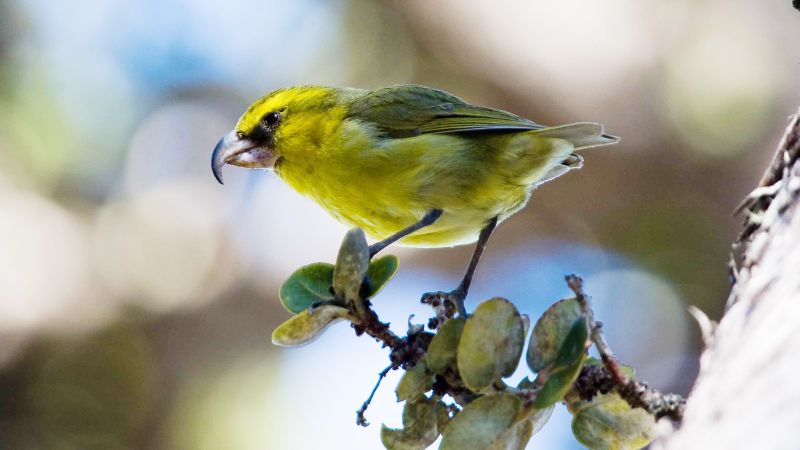The challenges facing the environment, particularly with the ongoing threat to endangered species, have compelled innovative measures and partnerships to arise. CNN’s editorial series, “Call to Earth,” is dedicated to exploring these issues, propelled by the efforts of organizations like Rolex through their Perpetual Planet Initiative. Their mission is to increase awareness regarding sustainability and address the environmental struggles our planet encounters, encouraging collective action for positive change.
In a striking example of grassroots conservation, this past June, dozens of biodegradable pods descended over Hawaii’s lush forests via drone delivery. Each of these pods housed approximately 1,000 non-biting male mosquitoes, specifically bred in laboratories for a related mission: combatting the invasive mosquito populations threatening native species. These targeted mosquitoes carry a benign bacterium that, when mating occurs with wild females, results in non-viable eggs. This initiative is particularly vital for protecting the archipelago’s endangered bird populations, such as the rare Hawaiian honeycreepers, which have witnessed a catastrophic decline due to avian malaria.
Hawaiian honeycreepers, essential members of the ecosystem as pollinators and seed dispersers, hold significant cultural value in Hawaiian tradition. Yet, their numbers have dwindled alarmingly; once boasting over 50 known species, only 17 are known to exist today, with the majority facing extinction. Among these, the ‘akikiki has gone functionally extinct in the wild, while conservationists estimate just under 100 individuals of the yellow-green ʻakekeʻe remain.
Dr. Chris Farmer, the Hawaii program director for the American Bird Conservancy, attributes much of this decline to avian malaria spread by non-native mosquitoes first introduced to Hawaii in 1826 by whaling vessels. This previously resilient avian population, lacking any natural immunity to the disease, is seeing a crisis due to the rising threat of both mosquitoes and climate change, which now pushes these pests further into higher habitats previously thought secure for the honeycreepers.
With the advent of climate change bringing warmer temperatures, observed mosquito populations have begun encroaching into these higher elevations where honeycreepers formerly found refuge, leading to potential total habitat loss for these birds. The pressing need for a solution is underscored by Farmer’s assertion: “If we don’t break that cycle, we’re going to lose our honeycreepers.”
In the quest for effective mosquito control, conservationists have been investigating varying strategies, seeking balance without endangering other native insect populations crucial for ecological stability. One proposal, the Incompatible Insect Technique (IIT), involves releasing male mosquitoes infected with Wolbachia bacteria. This technique aims to reduce wild mosquito populations over time. Identified as the primary candidate for addressing avian malaria transmission, the American Bird Conservancy, in collaboration with a multi-agency partnership called Birds, Not Mosquitoes, has embarked on implementing IIT in Hawaii.
After several years of research and regulatory engagement due to the complex nature of releasing millions of mosquitoes into the ecosystem, the program began ramping up production in 2022, breeding their bacterium-infected mosquitoes in a Californian lab. The process of releasing these insects in Hawaii began in earnest the following year, utilizing biodegradable pods dropped from helicopters to ensure coverage within the honeycreeper habitats.
While the logistical challenges of operating in the remote, rugged terrain of Hawaii are considerable, the introduction of drone technology has allowed for increased flexibility and reduced costs in deployment operations. By utilizing drones for mosquito delivery, the operation can mitigate risks to people involved and maintain a steady rhythm of deployment aligned with environmental conditions.
As this process unfolds, preliminary studies conducted by San Diego Zoo Wildlife Alliance indicate potential for saving honeycreepers from extinction if IIT control efforts prove successful. Research conducted by Dr. Christopher Kyriazis underscores that time is of the essence, urging swift action to prevent further decline in populations.
Should the mosquito populations dwindle effectively, these birds might replenish themselves with increased genetic diversity, exhibiting signs of natural resistance to avian malaria as already observed in species such as the ‘amakihi. Captive populations could also be reintroduced to the wild, expanding the chances of survival for species like the now-extinct ‘akikiki.
Being at the forefront of these conservation efforts, Farmer expresses a profound commitment to preserving these unique birds. His drive stems from the sobering reality that if action is not taken within the decade, the chances of a long-term future for these remarkable species diminish significantly. Through proactive measures and pioneering techniques like IIT, there lies a sliver of hope for Hawaii’s endangered avian inhabitants and, by extension, for the broader ecosystems they help sustain.












